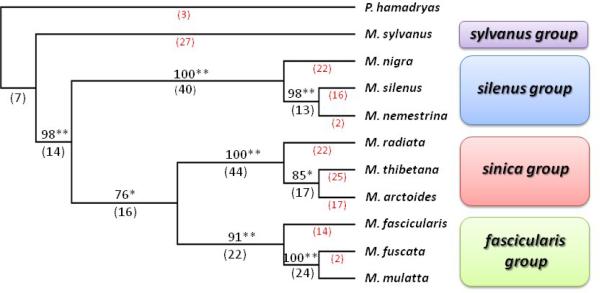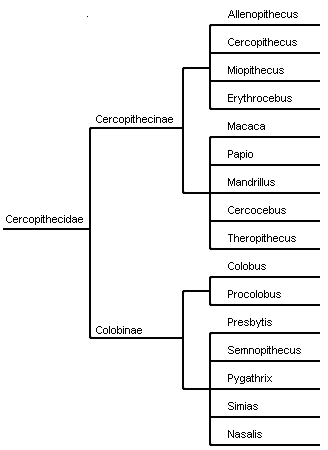
Classification
Domain: Eukaryotes
Kingdom: Animalia
Phylum: Chordata
Class: Mammalia
Order: Primates
Family: Cercopithecide
Genus: Macaca
Species: Mulatta
The scientific name Macaca mulatta roughly translates to
"brown macaque" in english. The macaque is a broader term for the
group of monkeys to which the Macaca mulatta belongs.
The Macaca mulatta is most broadly grouped as a
Eukaryotic organism. This means that it is part of the complex
multicellular group, and this means that the cells of this organism
have individual organelles for different tasks. These can vary from
mitochondria for energy production, to ribosomes for protein
production. This multitude of specific organelles are needed for the Rhesus
Monkey to meet the means of energy and functionality of its entire
body. Also, the Rhesus monkey is a Mammalian, which means
that the female give birth to living infants, as opposed to eggs or
larvae. A more specific group of Rhesus Monkey is the Primate
classification, and these are considered to have good eyesight,
flexible hands, and feet (biology-online.org).
Figure 2. Taxonomic tree of the Genus Macaca. The tree's
phylogenies are based on alu elements of each organism. Alu elements
are short stretches of DNA taken from each organism (Teixeira-Silva
A, 2013).
The taxonomic tree (Figure 2.) is of of the Genus Macaca, and they all have distinct physical differences. The Macaca mulatta has a stumpy tail, while the Macaca fascicularis has a relatively long tail. Nemestrina have a pig-like tail, and they are associated by other phenotypes like hair color. (Jing L 2009)

Figure 3. Taxonomic tree of Cercopithecidae (Old World
Monkeys) (darwiniana.org).
As seen in Figure 3, the Cercopithecidae are distinguishable from the
Colobinae by multiple physical features. An example of this is,
the Cercopithecide or “Old World Monkeys” all have tails,
but none of them are prehensile (cannot grasp), while some
Colobinae have a prehensile tail. Another contrasting feature
between the two families is, the Colobinae or “New World
Monkeys” have widely spaced nostrils that are not downward facing;
this is to the downward facing close nostrils of Old World Monkeys.
The Rhesus Monkey is part of the Cercopithecide, Old World
Monkeys. (Cabrillo.edu)
Return home or learn about the life cycle of the Rhesus monkey.
